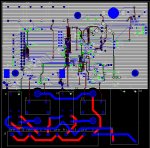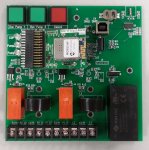I have a couple of Intermatic mechanical timers for my pumps and I'm constantly annoyed by them. At least once a week I'm outiside manually controlling them to get the cleaner running a while or to get some water flowing to get additional chemicals mixed into the water. The manual control always revolves around making sure the booster doesn't run when the main pump is running, either by adjusting the position of both dials (so the time is never right) or by moving the on/off switches.
Also, last week I was poking around on one of the timers and shorted a +120v to the on/off switch and it welded itself to the on position. I used a wrench to break it loose and it appears to be working, but it may be running a bit slower than it should be. The time doesn't seem to be right on the dial after a couple of days now. Last night, my second timer got stuck when it reached the "off" switch (think I've seen it called a dog?) and my booster pump ran all night mostly without the main pump. So, not only do I get annoyed by having to adjust things on the timers every few days, but I also am losing faith that they're working properly.
I'm an electrical engineer and have the ability to design my own digital timer with as much functionality as I'd like it to have. If you were looking to buy a digital timer, what kind of features would you want it to have? This is what I've thought of so far:
Anyone else have any ideas to add to the list?
Also, last week I was poking around on one of the timers and shorted a +120v to the on/off switch and it welded itself to the on position. I used a wrench to break it loose and it appears to be working, but it may be running a bit slower than it should be. The time doesn't seem to be right on the dial after a couple of days now. Last night, my second timer got stuck when it reached the "off" switch (think I've seen it called a dog?) and my booster pump ran all night mostly without the main pump. So, not only do I get annoyed by having to adjust things on the timers every few days, but I also am losing faith that they're working properly.
I'm an electrical engineer and have the ability to design my own digital timer with as much functionality as I'd like it to have. If you were looking to buy a digital timer, what kind of features would you want it to have? This is what I've thought of so far:
- Temperature sensor - If the temperature drops below 0 deg C for more than an hour, run the pumps. If the temperature drops below -10 deg C, immediately run the pumps[/*:m:2zmcmjwp]
- Allow a pump to be a slave to a master, the slave can only run if the master is running[/*:m:2zmcmjwp]
- Have an "Add 15 minutes run time" button to the pumps so if I do want to run the cleaner, I can just press it 4 times to run it for an hour. If the cleaner pump is set as a slave to any other pump, then its master pump would also run for the same amount of time[/*:m:2zmcmjwp]
- Current monitoring - If current drops to 0 unexpectedly, then it might indicate a problem. If current is higher than normal, it might indicate a problem[/*:m:2zmcmjwp]
- Current logging - log current draw to an SD card periodically[/*:m:2zmcmjwp]
- WiFi - If it is close enough to your house, you could connect directly to the timer via a laptop or PC to set the schedule and download the current log. You could also view the status of the device while it is running[/*:m:2zmcmjwp]
- Bama Rambler: Real time clock to keep the time in the event of a power loss[/*:m:2zmcmjwp]
- Leebo: Android/iPhone app[/*:m:2zmcmjwp]
Anyone else have any ideas to add to the list?



